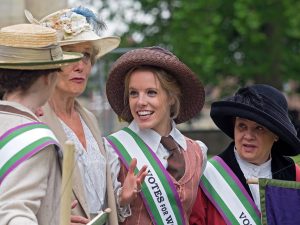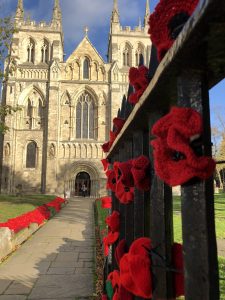The fight for the right
Brontë Mitchell talks to Bridget foreman about her role in bringing the 20th York females into the 21st spotlight

Writing plays about empowering suffragette females, lecturing at York University and scouring through the York archives are just a few things Bridget Foreman, playwright, has balanced in between her busy life as both a wife and mother. Personally, I wonder how she does it all!

Freelance playwright, Bridget Foreman, has always had a keen eye for theatre whether it be acting, script writing or directing. With power and a sprinkle of intelligence she has climbed her way into the theatre world. From being an active member of the National Youth Theatre during her time at Oxford University to now having a role as associate director for the Riding Lights Theatre Company in York she really has made a massive jump.
Like a bullet, her power and acceleration to write has constantly been fuelled by activism and politics from the 20th century to today. She even uses Twitter to constantly reveal her opinions on today’s news. And even in true feminine fashion her decision to keep her maiden name expands her willingness to fight for what she believes is female and perhaps in our distorted world this type of attitude is what we need.
Bridget has been living in York since before 1992 and has created a life in the city for both her family and for her career. However, in 2017 York began to appeal more to her and became more than just the city she lives in as she wrote her most recent play titled ‘Everything is Possible’. The city became the backbone to her inspiration for writing a play on the untold stories of the York suffragettes.
The scripture followed activist, Anne Seymour played by well-known British actress Barbara Marten, and her journey to get female votes politically. It celebrated the successes and sufferings of these females in York between 1912 and 1918.
Performed both in the York Theatre Royal and on the raised pavement outside The York Minster’s entrance she embedded the literal architecture of York into the acting. With 12 main actors and 150 volunteers from York she worked a scene of protest and disorder into the beginning of the play that contrasted to the normal calm streets of York we would see today. Women held signs capitalised with ‘Votes for Women’ and ‘Deeds not Words’ on the front and wore sashes stitched with the purple, white and green colours of the Suffragettes.
For keen feminist Bridget, writing a play set entirely on the basis of female power was top of her list of accomplishments, “a lot of history is told by the men and women tend to be around the edges of the story, so as a female writer having a story that absolutely had women at the centre of it was fantastic.”
Bridget spoke of this play with emotion and dignity as what made this play different to any other she’d done before was the connection she felt to the women of her city, “I really did feel the weight of responsibility as well as pride in what had been won by women who had been living on the same street as me one hundred years ago.”
Bridget and her husband, Mark Payton, adopted her twin daughters from Ethiopia in 2009 at just seven months old. To have been through such a wonderful and sentimental adoption further puts into perspective Bridget’s perseverance and strength to bring females into the light and echo the message of feminism through drama. Her title ‘Everything is Possible’ doesn’t just echo the women but Bridget herself, and she should feel immensely proud about that.

One could say she embedded some her of experiences as a mother into the play in the reflected portrayal of Anne Seymour’s family; “It was kind of a key thing of feminism that the domestic is political that actual everything that happens in our domestic lives has political aspects to it and what I really wanted to do was to take a family who’s entire life was domestic but actually there are all kinds of politics issues that this women is engaging in on a daily basis to do with class, employment and education.”
The scripture and performance received four out of five stars by ‘The Guardian’ but raised a few eyebrows as the public watched York through a different light. Bridget explained herself that, “There was that local connection that absolutely rooted the story in York and then there were lots of things to do with where meetings where held and outdoor speeches being made we know that St Helens Square was used, we know where offices of the ‘Women’s Social and Political Union’ meetings were in Coney Street, we know that there was a little bomb place outside the offices of the Yorkshire evening press”
Emotional and poignant, the play was written during the run up to the 2017 UK election. Whilst writing in a time when political change was happening in the 21st century she was writing about political upheaval in the 20th century and for Bridget this was very exciting. “It really did focus my mind all the time that I was writing about women who didn’t have a vote and I was aware that my vote then was being thought through by all the political parties who were engaged in the election. I was someone of political value and I was writing about women who had no political value at all.”
It truly is extraordinary how one city can host a variety of destruction and degradation and to have this come to life visually on stage in the heart of the city is captivating. Although ‘Everything is Possible’ was written and performed in 2017 this play is likely to be spoken about for a long time coming and I’m not the only one that’s hoped Bridget has kept a copy of this spell-binding script, so it can hopefully be performed again soon.





